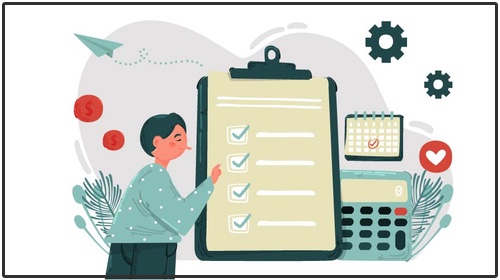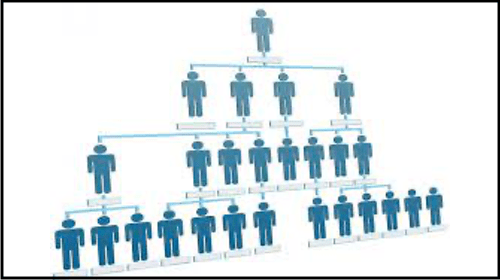Measuring and Managing the Performance of Your People
Authored by:
iClick2Learn Team
Translate Text
Transcripts are available under the videos
This section is about measuring the performance of the people in your service. In particular, we’ll be reviewing your service manager as the primary role your committee will review. Your committee may also review volunteers, however, in the majority of cases, your committee doesn’t become involved in assessing the performance of other staff. This function is a delegated responsibility of your service manager’s role.
It is appropriate to discuss the assessment process and what your service manager is planning, but it may not be appropriate for your committee to become involved in detail, giving your role as governance, not management. A couple of key reasons you might be involved in these assessments of other staff would be if your service manager requests it, your committee is performing this in absence of a service manager, or you have reason to believe it’s appropriate, for example, if conducting a 360 degree review of your service manager.
It is important to ensure that whoever is conducting the performance assessment has the required skills, knowledge and experience in this area. You may also wish to say professional advice. We take a look at why measuring performance is important. What can be measured and how you can use the measurements to benefit your service and the people working with you? We also take a look at some strategies to help your service thrive in times of change and when you’re face with challenges.
Managing and monitoring how your service manager is performing is a priority for the success of your service. How they fulfil their role is a key factor in how well your service performs. Monitoring performance of your service manager is a shared responsibility of your committee and service manager. One way that your committee monitors performance is during regular committee meetings where your committee receives reports of operational activity and strategic progress.
Monitoring between these meetings is often undertaken by your president or another delegated committee member. Monitoring and managing performance is also about supporting and developing your service manager in their role. One way the committee can add value is to ask a few questions, such as, what can we do to support you in your role? It’s also important to provide feedback, and we’ll discuss this in the next lesson. In any process where you review the performance and development of a person, it’s important to take time to consider the information you need to gather to inform this process. Let’s hear from our service manager, Mark, who has some questions for Susan, our president, about his appraisal.
I’m just wondering how my appraisal will work. Of course, for your annual appraisal, we’ll ask a range of stakeholders, including parents and the committee, for feedback. And then, between these formal appraisals, you and I will have regular monthly check-ins to discuss progress and any concerns you may have. Oh, great, it’s good to confirm, thank you. Performance appraisals can be a daunting experience for everyone involved. There is legislation and your service’s policies and procedures to navigate, as well as the individual emotions and relationships between those involved.
At times, performance appraisals can be the catalyst for identifying issues and concerns, or be the trigger for dealing with those you’ve already noted. Some of you may choose to engage a professional during this time, and others may be handling the process internally. Regardless of your approach, there are three key things that your committee needs to consider.
The first is that the rules of natural justice apply. This means that if you’ve got any concerns, you need to provide your service manager with the opportunity to address those concerns. The second is that you need to follow the policies and procedures of your service regarding underperformance, dispute resolution, and warnings. You should also review your service manager’s contract, award, or enterprise bargaining agreement to make sure you comply. The third key point is to check with the best practise guides provided by Fair Work. We’ve included some links to key resource pages.
There are four key elements in the performance management cycle. The first of these is to set some benchmarks of performance. This happens when we set goals and clarify how we’ll measure them to know when they’re achieved. For example, obtaining a formal qualification is a goal that can be easily measured. Other goals may require your service manager to simply document their activities and present them as a verbal or written report. For example, a goal to improve planning may be clarified as making sure projects begin with identifying all the resources required, including staff, funding, materials, and other support.
The evidence of this planning can be documented in a project plan and your committee can review the written plan. Your service manager’s performance can be measured through documentation and key performance indicators or KPIs. Examples of documents with goals and measures to consider include position descriptions, your strategic plan, your operational or work plan, and your quality improvement plan. KPIs will be within these documents. However, there might be some other indicators your committee will use, such as staff and volunteer turnover and service user satisfaction ratings.
Feedback doesn’t always need to be in a formal setting. Stuart shares why informal feedback is just as important. Having informal feedback sessions. I like to have regular coffee catch ups that helps to build trust and rapport. People are more receptive to feedback in a more casual setting and feel they can talk more honestly about their problems, or ask for help. The second key element is for your committee to provide regular encouragement and informal feedback to your service manager. These regular monitoring processes are really important. Everyone needs a coach and guide to keep them accountable and on the right track. Kylie’s going to share some approaches she’s found useful when facilitating improvements with committee members. So in terms of approaching the discussion, it’s important to be transparent about the reason for the conversation, to be strategic in choosing who form the committee has the conversation, and to have an established performance management strategy that everyone’s aware of so that people know what to expect from the process.
The third key element is a focus on supporting the development of your service manager in their roll. It’s also just as important to discuss with your service manager what their professional development goals are. You might also have some training needs your committee has identified. Chuck has some tips for you when approaching discussions on staff performance. The most important thing is to not wait for any formal performance evaluation process. If you have concerns about your manager and how things are going, you need to act immediately. That means becoming much more active as a board member and sending out your concerns in writing to the manager so there aren’t any surprises down the track and it’s all documented.
You’ve got to be really clear about expectations, timeframes, and when things need to happen. You should have an annual formal performance assessment discussion with your service manager. Whilst not all committee members need to be involved in this process, it’s important that you seek feedback from them. You might want to also gather additional feedback from key stakeholders. Stuart shares some tips on how to approach improvement discussions with staff or service managers. The board needs to know its roll and the staff and manager rolls in the organisation. If the board wants to make recommendations to staff or managers, you need to follow hierarchy and to talk to the executive manager first to make sure proper process is followed.
Managing the performance of your service is important for two main reasons. The first is so that you can demonstrate accountability to stakeholders and funders. They want to know that you’ve delivered what you promised and are complying with the conditions of your contract. And the second is to identify the strengths and weaknesses of your service. In order to manage performance, you first need to measure performance. There are many examples of measurements or performance indicators that can be grouped into two main categories. The first is financial performance.
Financial indicators will reveal the financial health of your service. This can include monitoring working capital, liquidity ratios and variances of projected income and expenses to actuals. The second is non financial indicators which could be things like an increase in skills or knowledge or a change in outcomes for other service users or staff and volunteers. There are two types of measurements you can use. The first is quantitative, meaning things that can be measured with numbers, for example, the number of participants in a programme or activity. The second is qualitative, meaning a statement or description of the quality of your service or programme. A qualitative indicator could also be something like low staff turnover which can indicate your service is a great place to work.
A good place to begin is to review your strategic plan for indicators that can be tracked and evaluated by your committee, for example, things which have to be monitored like conditions and guidelines set by donors and funders. You can also look at things that demonstrate whether a particular activity has the desired impact. For example, has there been a change in attitude or opinion as a result of a training programme for staff? One thing that is important to measure is whether or not you’re fulfilling your mission and achieving your purpose. You might measure the number of programme attendees from identified target groups attending your service and the cost per head for them to attend.
You would then compare this to the programme goals set out in your strategic plan. For a well-rounded assessment of your service’s performance, it’s best to gather a variety of qualitative and quantitative financial and non financial data. Another thing to consider would be to review your risk management plan and consider what reports you’d like to receive on the key risks identified. There are a few models for measuring performance. One of these is results-based accountability or RBA. This tool involves the collection and analysis of data using a step-by-step methodical approach. You’d start this process by specifying the outcomes your service intends to achieve and the indicators that help you demonstrate when the achievement has occurred. You then use these results to track your progress.
RBA uses three critical questions when looking at categories of measures. These are: how much did we do, how well did we do it, and is anyone better off? Using this example, your service manager may have identified the outcome sought is ensuring all educators have a common understanding, awareness and knowledge of a new service process. To measure quality, you might survey service users about the level of customer service and support they feel they’re receiving from educators. The output or measure that might also indicate this goal has been achieved might be achieving a benchmark of 85% satisfaction or a decrease in complaints received.
So as a committee monitoring what’s happening, you would receive reports regularly on these areas at relevant times. Underpinning all these indicators is the process of collecting data, information, and the evidence to tell you how your service is doing.
Change can occur in many ways across your service. One of the more difficult changes can be when you need to make adjustments to your performance. This can be adjustments due to the structure of your service, the people within it or the culture. Change can be triggered by events such as a key person leaving your service, a new strategic direction, change in branding or image or an enforced change such as an industry standard, government policy or legislative amendment.
Regardless of the change, it’s important to follow a clear process to maximise the chance that the change will stick. Change in an organisation can be challenging. Mandy has some advice on how to help make change a positive experience. Any change, even if it’s a positive change, can make people feel uneasy, so it’s important to communicate key messages clearly and in a positive framework. Key messages should always include reasons for the change, as the reasons aren’t always evident to people or the long process that happens behind the scenes. There are a few models of change available.
One of the useful ones that focuses on preparation, implementation and monitoring is John Kotter’s eight step change model. Let’s briefly review that. More detail on this change model can be found in the downloads and links. Step one is to create a sense of urgency. Communicate with everyone about upcoming changes, and set a deadline and path to follow. A broad project plan is an important deliverable in this stage. Step two is focused on you building a guiding team. Make sure your people are willing to work with change and drive the change forward. In step three, you’ll create a vision and generate enthusiasm for the change. Share the benefits of the change within and outside of your committee. Explain the why’s, when’s and what’s so they understand what’s happening. Step four is to communicate the change.
Educate all stakeholders about the importance of this change and the positive impact it will have. Have key people model new behaviours associated with the change. Step five is to empower people to act. Remove roadblocks like ineffective processes and encourage people to experiment and get out of their comfort zone. The goal for step six is to generate short term wins. Reward people who come on board with enthusiasm early on to model the behaviour to others. Step seven asks you to consolidate your achievements and build on the change. Take note of the positive outcomes from the changes. Hire, promote and develop people who assist in implementing the new vision. Step eight reinforces success by talking to people about the new behaviours that have helped the success of your service. Make sure those in leadership roles are supported in maintaining a sense of urgency.
In this section, we’ve looked at ways you can measure the performance of the people in your service, as well as the performance of your service itself. We’ve looked at what’s involved in the process of measuring performance, what can be measured, and how you can use the measurements to benefit your service and the people working with you. We’ve also discussed strategies you can use to keep your service thriving in times of change and challenge.




















